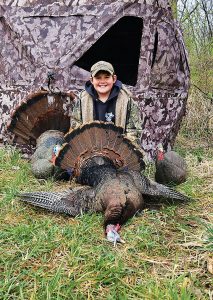Goldfinches earned my admiration Saturday morning.
Having collected nearly 100 purple coneflower seedheads last fall, I finally set about to taking the sharp, piercing little seeds off the head. In years past, we’ve merely thrown entire seedheads out onto our prairie with limited success. A better answer seemed to be spreading the seeds individually, since they are smaller and more likely to find their way into cracks and crevices than a big old ball-o-seeds.
But plucking coneflower seeds is a formidable task. “How do the goldfinches do it so effortlessly?” my mind pondered, as blood started trickling from numerous little stab wounds in my fingers. “Those things are sharp.”
At such times, I feel like Jon Snow of Game of Thrones. I know nothing. That feeling has come to me more often as the years have piled onto one other. It’s been particularly prevalent while collecting the seeds of trees and prairie plants.
Despite reading and talking to others, I still know so little that sometimes it hurts. Literally. Problem is, an appropriate answer for a very specific question is not always easy to locate in books or on Google.
You tell me, how best to convince sycamore seeds to germinate? Only through experience has a workable answer become clear.
So it went Saturday, as I finally found a tool that stopped the bleeding. Pulling coneflower seeds with a pliers worked great. Seeds piled up and stabs to my sore finger tips stopped.
How to separate softer, spongy seeds of bergamot is still a bit of a mystery. Same for milkweed. What is one to do with all that fluff now that the Navy doesn’t need it to stuff life preservers any longer. Perhaps someone has an idea?
Someone will. Unbeknownst to many, there is a network of seed people out there. Some are tree lovers. Some want to grow the biggest tomato. Others like prairie plants.
One such person is Ellen Gibbons, who lives along the Spoon River northeast of Maquon. She was kind enough this winter to share seeds of turtlehead, ironweed and field goldenrod from her collections.
Gibbons has a wet sedge meadow on her property that yields seeds every year. It’s one of those rare native areas that has survived in the incorrectly named Prairie State.
Greg Herrmann of Pleasant Prairie Nursery outside Williamsfield is another savvy seed collector. He has even built a business out of collecting seeds, planting them and then selling them as plants. His prairie plugs do a wonderful job of naturalizing small spaces and providing pollinator plantings. Worth noting is that Pleasant Prairie will start selling on Fridays and Saturdays from May 13 to June 18.
But on a larger scale, like the 25-acre prairie we are attempting to cultivate, seeds are the only way to go. Even that can be cost prohibitive. The middle son visited Kelly Seed in Peoria the other day and brought home $195 worth of prairie flower seeds in a small sack weighing just over one pound.
“Dad, they were calling them ‘million dollar seeds,’” he said.
We grimaced. Truth is, that’s not accurate. Not yet. Seeds in a sack aren’t worth millions. They gain value in the ground. But unlike trophy tomatoes, which yield ripe fruits every year, most prairie seeds need years to reach their full value.
Only then, on some warm summer day while strolling through those 25 acres and admiring the colorful diversity of plants, will the seeds be worth millions.
That I do know.
• • •
Some well-intentioned bills have unexpected consequences. That’s the case for revisions to the Statement of Economic Interests form required of politicians, board members and some government employees.
Yes, Illinois has a problem with government corruption.
But we also have a problem finding people to run for office and to fill non-paying positions on boards and councils.
People who are corrupt may well lie when they fill out this form. People who are honest may be discouraged from serving. That’s a bad end result. Legislators need to tweak the form.
Contact Jeff Lampe at (309) 231-6040 or jeff@wklypost.com







